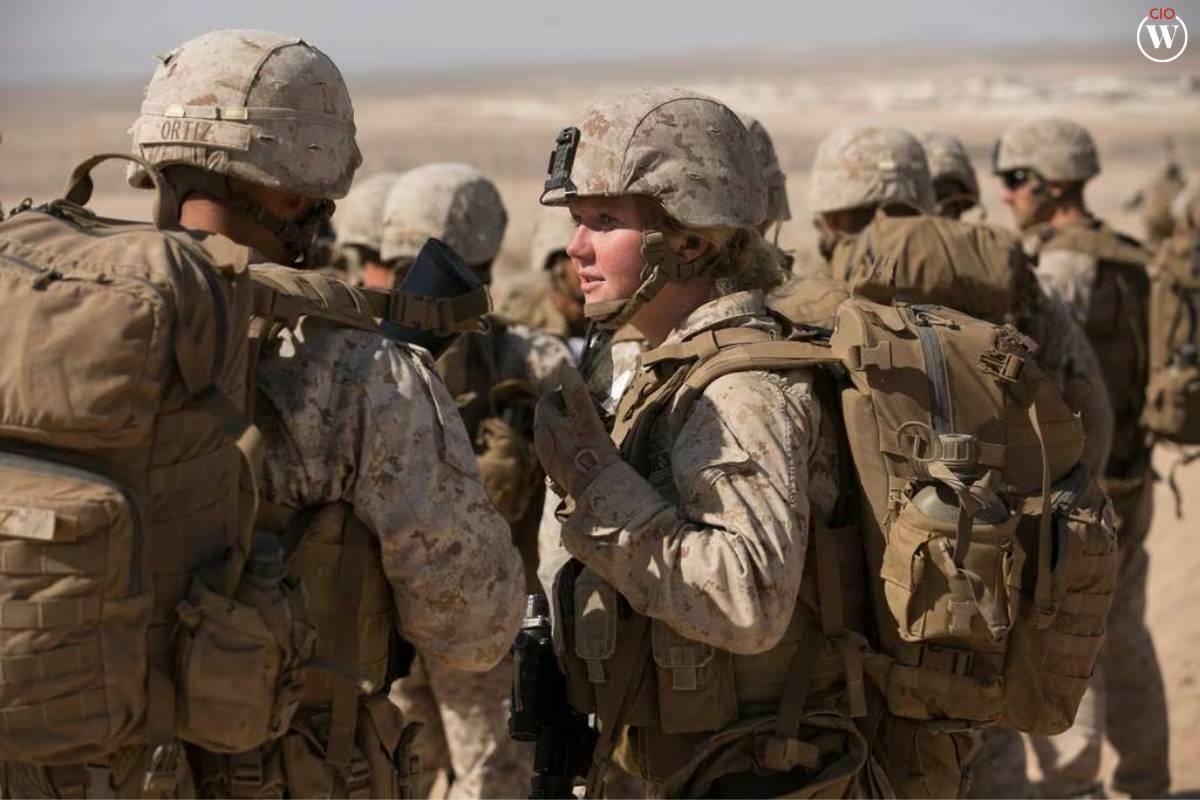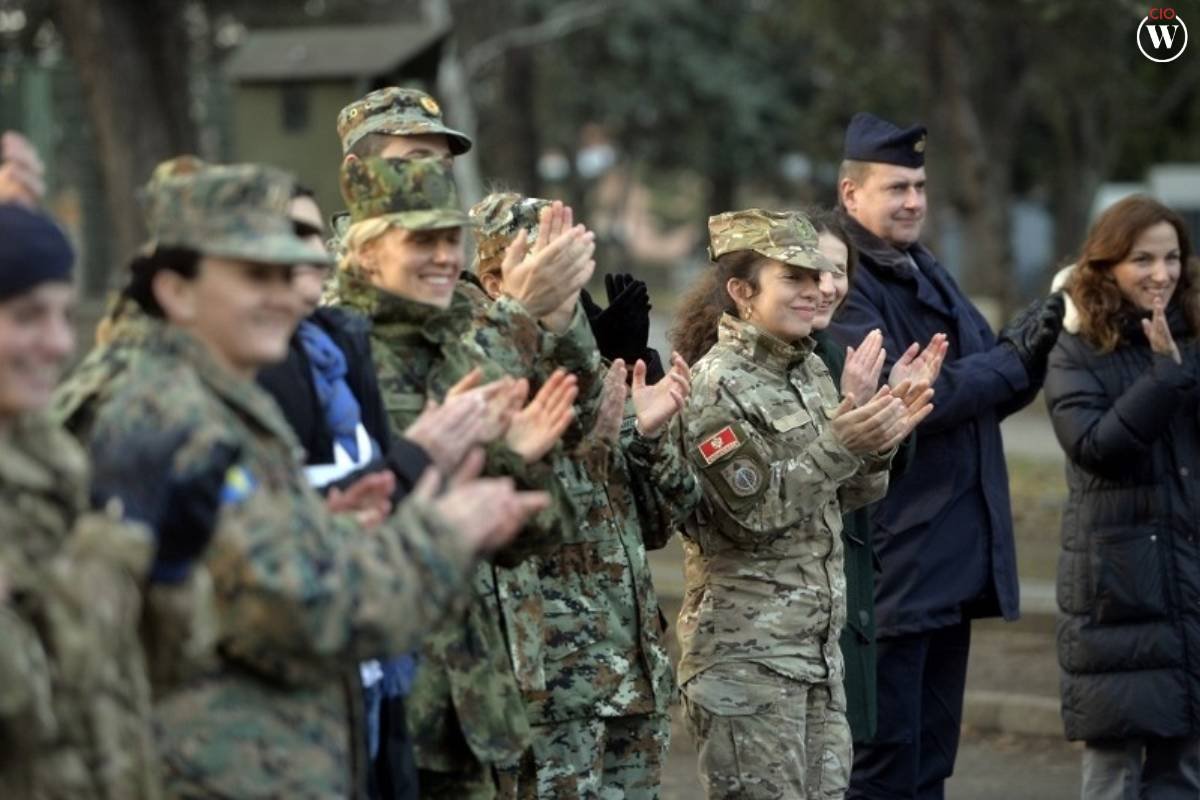Source – National Defense University Press
Gender diversity in military leadership is a crucial factor that significantly enhances the effectiveness and operational capability of armed forces. Historically, military leadership has been dominated by men, but the tides are turning as more women break through the ranks. Embracing gender diversity in military leadership not only promotes equality but also leverages a broader range of perspectives, skills, and experiences that are essential in today’s complex and rapidly evolving security environment.
The Importance of gender diversity in military leadership
1. Enhanced Decision-Making:
Diverse leadership teams are known to make better decisions. When both men and women contribute to strategic discussions, the range of perspectives can lead to more comprehensive and innovative solutions. Gender diversity in military leadership ensures that decisions are not made in an echo chamber but reflect a variety of viewpoints and experiences.
2. Reflecting Societal Values:
Armed forces that mirror the diversity of the society they protect are more likely to maintain public trust and support. Gender diversity in military leadership demonstrates a commitment to equality and fairness, aligning military values with those of the wider community.
3. Improved Operational Effectiveness:
Women bring unique strengths and skills to military roles. By integrating gender diversity in military leadership, the armed forces can utilize these attributes to enhance team dynamics, problem-solving, and conflict resolution. Diverse leadership teams are better equipped to handle the multifaceted challenges of modern warfare.
4. Recruitment and Retention:
Promoting gender diversity in military leadership can make military careers more attractive to women, thereby expanding the talent pool. When women see that they have equal opportunities to ascend to leadership positions, they are more likely to pursue and remain in military careers.
Challenges to achieving gender diversity in military leadership
Despite the clear benefits, achieving gender diversity in military leadership is fraught with challenges. Traditional gender roles and stereotypes often hinder the progress of women in the military. Here are some of the key obstacles:

- Cultural Barriers: The military has long been perceived as a male-dominated field. This cultural bias can create an unwelcoming environment for women and impede their advancement. To foster gender diversity in military leadership, it’s essential to challenge and change these cultural norms.
- Policy and Structural Issues: Policies and structures within the military can inadvertently disadvantage women. For instance, policies related to maternity leave or physical fitness standards may need to be re-evaluated to ensure they do not disproportionately affect women. Creating an inclusive policy framework is vital for promoting gender diversity in military leadership.
- Lack of Mentorship and Support: Women often lack access to mentorship and support networks that are crucial for career advancement. Establishing mentorship programs specifically designed to support women can help overcome this barrier and promote gender diversity in military leadership.
Successful strategies for promoting gender diversity in military leadership
Several countries and military organizations have implemented successful strategies to promote gender diversity in military leadership. Here are some effective approaches:

1. Inclusive Recruitment Practices:
Adopting recruitment practices that actively encourage women to join the military is a fundamental step. This includes targeted outreach and the elimination of biases in recruitment processes.
2. Leadership Training Programs:
Providing leadership training programs tailored to the needs of women can help prepare them for leadership roles. These programs should focus on building confidence, leadership skills, and strategic thinking.
3. Policy Reforms:
Reviewing and reforming policies that may hinder the advancement of women is critical. Policies should support work-life balance, such as flexible working arrangements and adequate maternity leave, to retain women in the military.
4. Mentorship and Networking:
Establishing mentorship and networking opportunities for women can provide the support they need to advance. Mentorship programs should pair women with experienced leaders who can offer guidance and advocacy.
5. Gender Sensitivity Training:
Implementing gender sensitivity training for all military personnel can help change attitudes and behaviors that undermine gender diversity in military leadership. Such training should emphasize the value of diversity and inclusivity.
Case studies: gender diversity in military leadership around the world
Several countries have made significant strides in promoting gender diversity in military leadership. Here are a few examples:
Canada:
The Canadian Armed Forces (CAF) has been a leader in promoting gender diversity. The CAF has implemented comprehensive policies to integrate women into all roles, including combat positions. They have also established mentorship programs and gender advisory networks to support women in leadership.
Norway:
Norway has a long history of promoting gender equality, including within its armed forces. The Norwegian military has adopted policies to ensure that women have equal opportunities to ascend to leadership roles. Norway’s inclusive approach has resulted in a significant number of women in senior military positions.
Australia:
The Australian Defence Force (ADF) has taken proactive measures to increase the number of women in leadership roles. The ADF’s initiatives include gender diversity training, mentorship programs, and targeted recruitment campaigns. These efforts have led to a notable increase in the representation of women in leadership.
The future of gender diversity in military leadership
The future of gender diversity in military leadership looks promising as more countries recognize the value of inclusive leadership. However, continued efforts are necessary to overcome the remaining barriers and ensure that women have equal opportunities to lead.

- Global Collaboration: International collaboration and the sharing of best practices can accelerate progress. Military organizations worldwide should work together to develop and implement strategies that promote gender diversity in military leadership.
- Continuous Evaluation: It is important to continuously evaluate the effectiveness of diversity initiatives. Regular assessments can identify areas for improvement and ensure that strategies are achieving their intended outcomes.
- Promoting Success Stories: Highlighting the successes of women in military leadership can inspire the next generation of female leaders. Showcasing role models and their achievements can encourage more women to pursue military careers and aspire to leadership roles.
- Engaging Men as Allies: Men play a crucial role in promoting gender diversity in military leadership. Engaging men as allies in diversity initiatives can help create a more inclusive culture and ensure that efforts to promote gender diversity are supported across all levels of the military.
Conclusion
Gender diversity in military leadership is not just a matter of equality; it is a strategic imperative that enhances the operational effectiveness of armed forces. By embracing gender diversity, military organizations can benefit from a wider range of perspectives, improve decision-making, and reflect the values of the societies they serve. While challenges remain, successful strategies and global collaboration can pave the way for more inclusive and effective military leadership. As we move forward, continuous efforts to promote and support gender diversity in military leadership will be essential in building stronger and more resilient armed forces.









